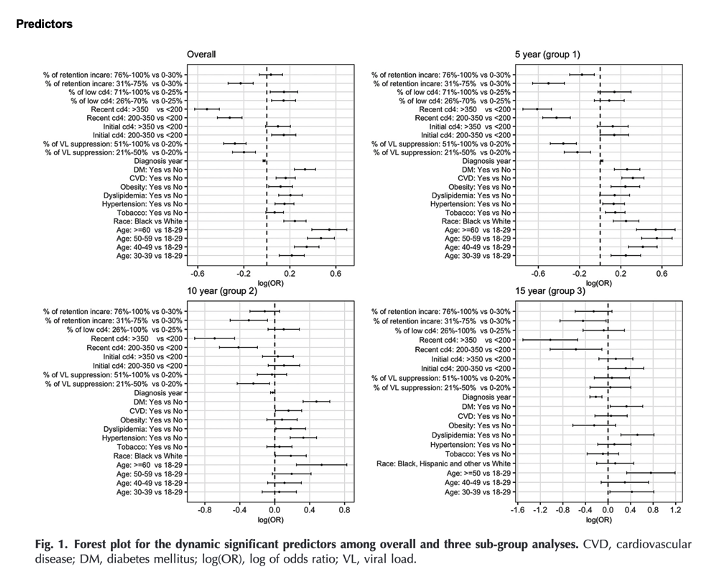| |
The incidence and dynamic risk factors of chronic kidney disease among people with HIV
|
| |
| |
Download the PDF here
existing literature suggested that PWH had a 1.8 to seven-fold increased risk of CKD compared with HIV-negative populations [9,10].
The current study examined the CKD incidence and the dynamic risk factors of CKD among PWH in South Carolina who were diagnosed with HIV between 1 January 2006, and 31 December 2019. Our findings highlighted the alarming incidence of CKD among PWH in South Carolina. The conventional risk factors, such as hypertension, diabetes mellitus, and dyslipidemia, were important factors associated with an increased risk of developing CKD. In addition, HIV-related factors, such as viral suppression, high CD4+ cell count, and retention in care, were associated with a decreased risk of CKD. These findings highlight the potential role of HIV-related factors in reducing the risk of CKD among PWH and informed us about the importance of maintaining an optimal immune function in improving clinical outcomes. Noteworthy, our findings on changes in risk factors emphasize the necessity of tailored intervention strategies for individuals in different follow-up periods.
The conventional risk factors we identified in the overall model were consistent with previous studies. Patients with hypertension, dyslipidemia, obesity, CVD, and diabetes mellitus have an increased risk of CKD and have been reported in a number of published studies [13,20,23], including those among the general population [29,30]. In addition, over 20% of days with viral suppression (<200 copies/ml), high recent CD4+ cell counts (>200 cells/μl), and over 30% of retention in care showed a significant protective effect on CKD occurrence.
Results:
Among 9514 PWH, the incidence of CKD was 12.39 per 1000 person-years.
The overall model indicated that conventional risk factors, such as hypertension, dyslipidemia, cardiovascular disease, and diabetes, were significantly associated with a higher risk of developing CKD.
HIV-related characteristics, such as high percentage of days with viral suppression, recent CD4+ cell count, and percentage of retention in care, were associated with a lower risk of CKD compared with their counterparts.
In the subgroup analysis, the results were similar for the 5-year and 6–10 years follow-up groups.
Among patients who did not develop CKD by the 10th year, the risk factors for developing CKD within 11–15 years were dyslipidemia, diabetes, low recent CD4+ cell count, and short duration of retention in care while other predictors vanished.
Conclusion:
Diabetes, CD4+ cell count, and retention in care were persistently associated with CKD despite of follow-up duration. Closely monitoring diabetes and improving CD4+ cell count and retention in care are important to lower the risk of CKD in PWH.

|
|
| |
| |
|
|
|